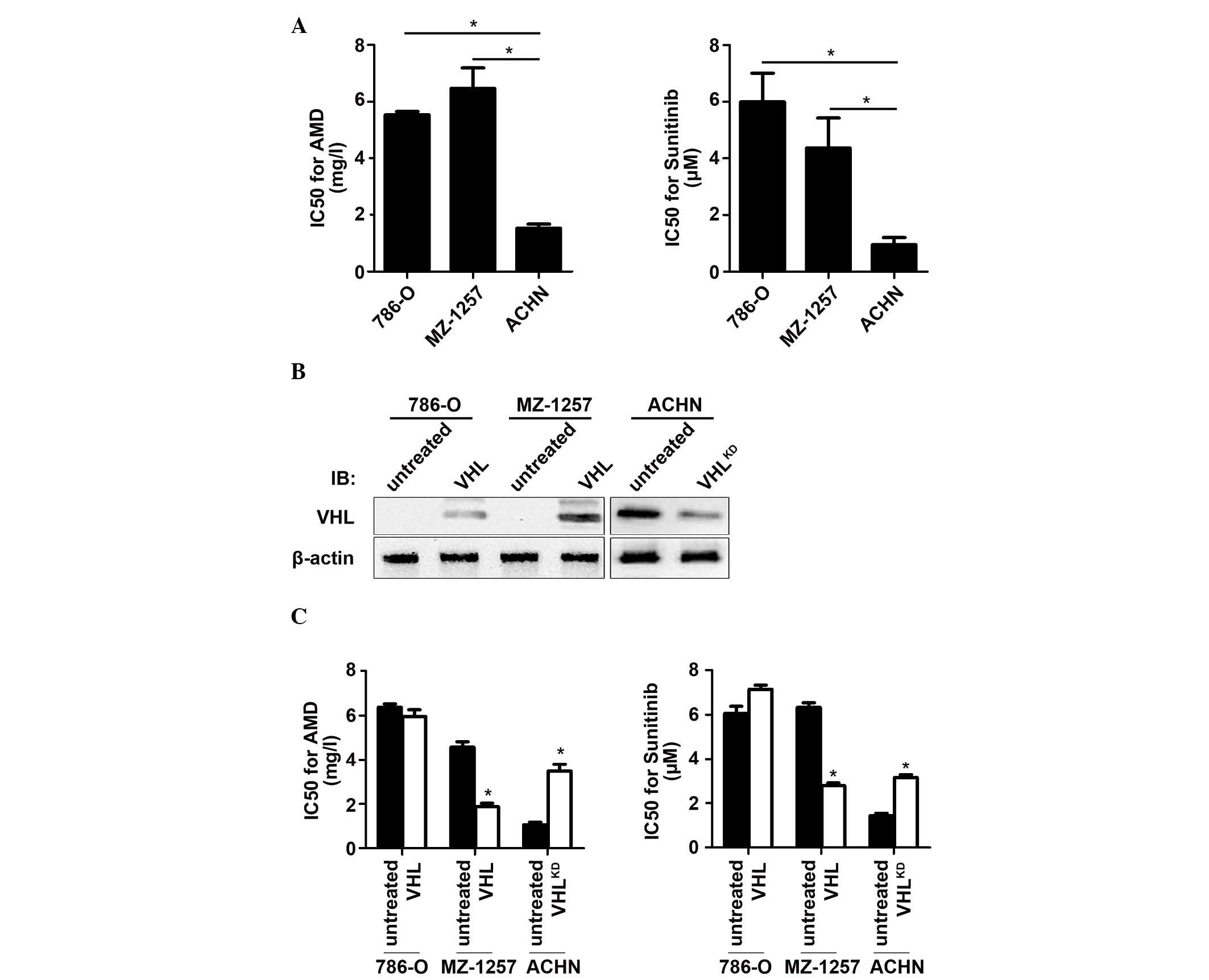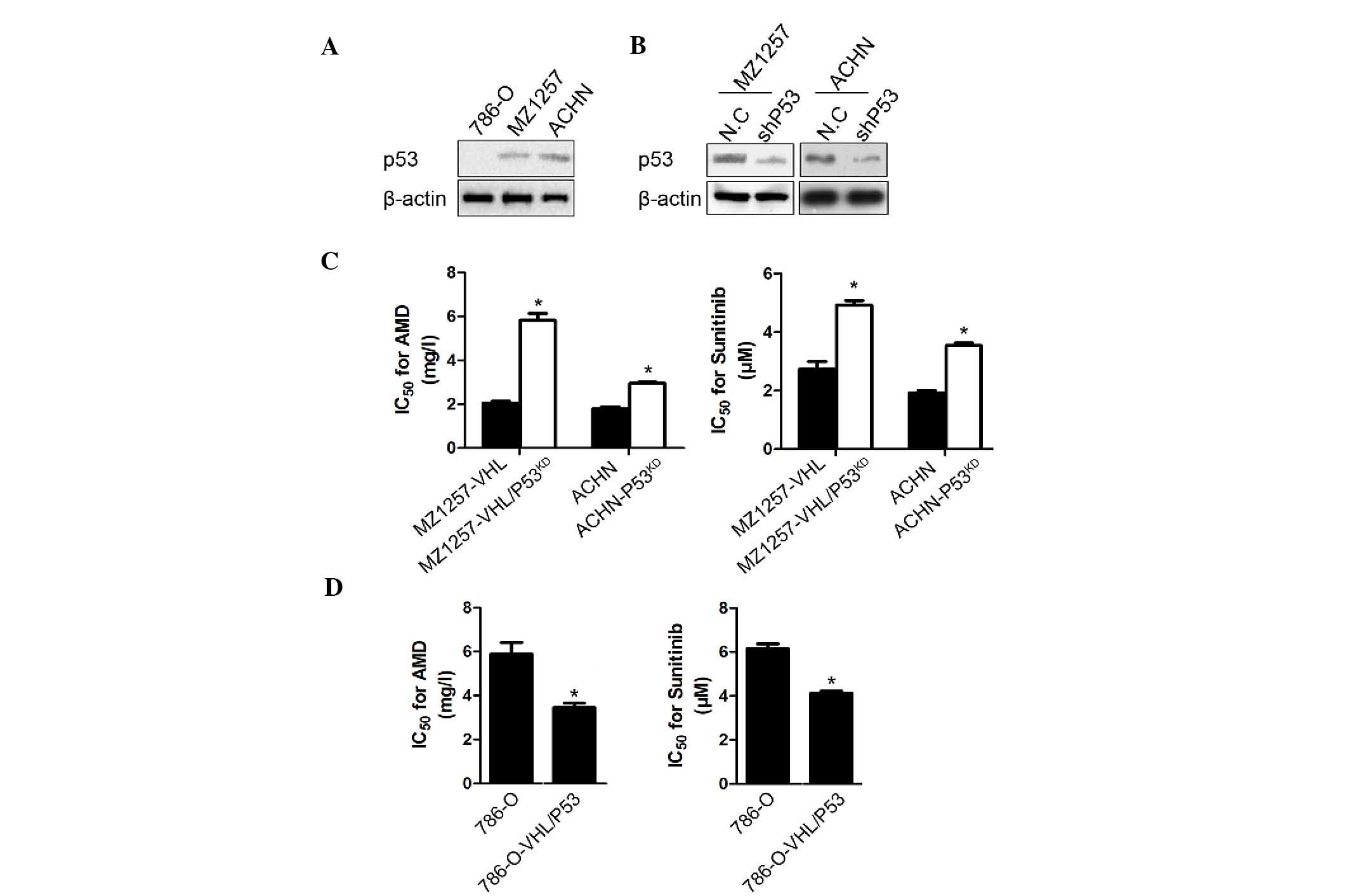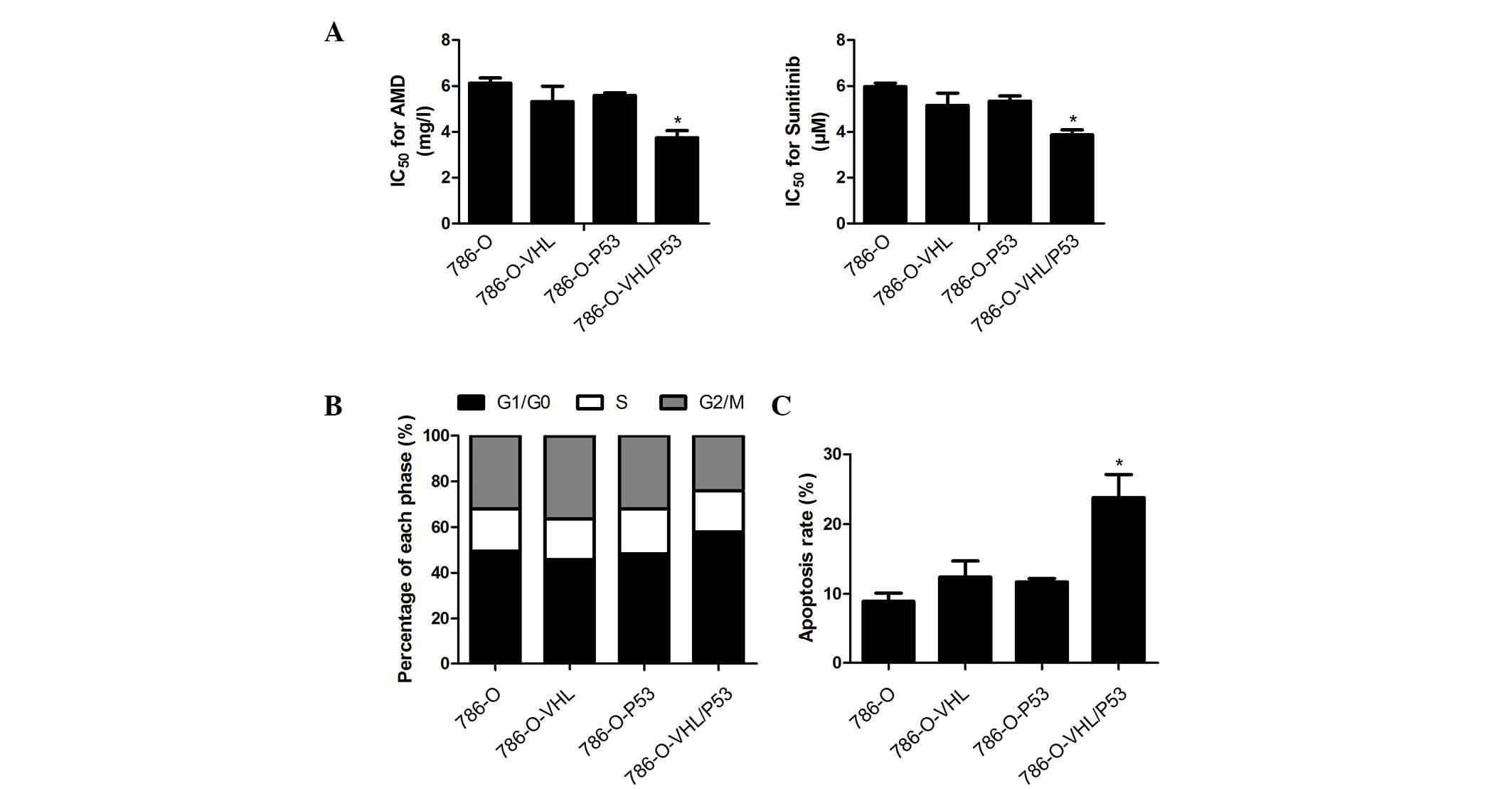Synergy between von Hippel-Lindau and P53 contributes to chemosensitivity of clear cell renal cell carcinoma
- Authors:
- Published online on: July 27, 2016 https://doi.org/10.3892/mmr.2016.5561
- Pages: 2785-2790
Metrics: Total
Views: 0 (Spandidos Publications: | PMC Statistics: )
Total PDF Downloads: 0 (Spandidos Publications: | PMC Statistics: )
Abstract
The von Hippel-Lindau tumor suppressor (VHL; E3 ubiquitin ligase gene) is frequently mutated or undetectable in clear cell renal cell carcinoma (CCRCC), and therefore these tumors are highly resistant to chemotherapeutic agents, including adriamycin (ADM) and sunitinib. A mutation in the tumor protein p53 (TP53) also leads to chemoresistance in tumors; however, in CCRCC, TP53 is frequently functional, yet the tumors remain highly insensitive to chemotherapy. This indicates the possibility of a synergistic effect of VHL and P53 in CCRCC. The present study aimed to detect the chemosensitivity of CCRCC. The expression of VHL in the MZ1257 cell line sensitized these cells to ADM and sunitinib, and a knockdown of VHL in the ACHN cells increased their chemoresistance. To confirm that VHL and P53 are both required for chemosensitivity, VHL and P53 were co‑expressed in 786‑O cells. The results of the functional antagonist assay (which assessed the IC50 values, i.e. the half maximal inhibitory concentration) confirmed that VHL and P53 act in synergy to promote chemosensitivity. Cell cycle arrest was measured by propidium iodide staining following treatment with ADM or sunitinib. Further analysis indicated that co‑expression of VHL and P53 inhibited cell proliferation by completely inhibiting the cell cycle at the G0/G1 phase, and promoted apoptosis following treatment with ADM or sunitinib. These findings demonstrated that VHL and P53 act synergistically in the regulation of cell proliferation and apoptosis in CCRCC. Overall, VHL and P53 have important roles in the regulation of cell proliferation and apoptosis in CCRCC. Furthermore, the regulatory role of VHL is dependant on the activation P53.












